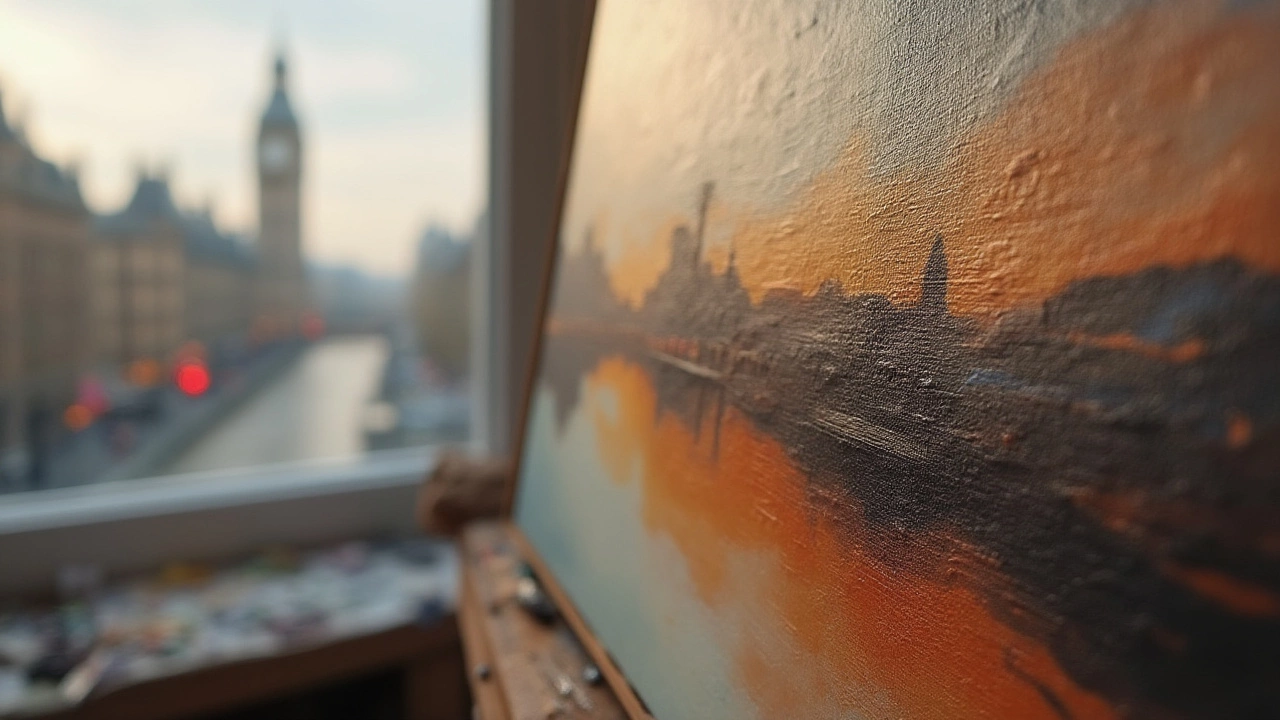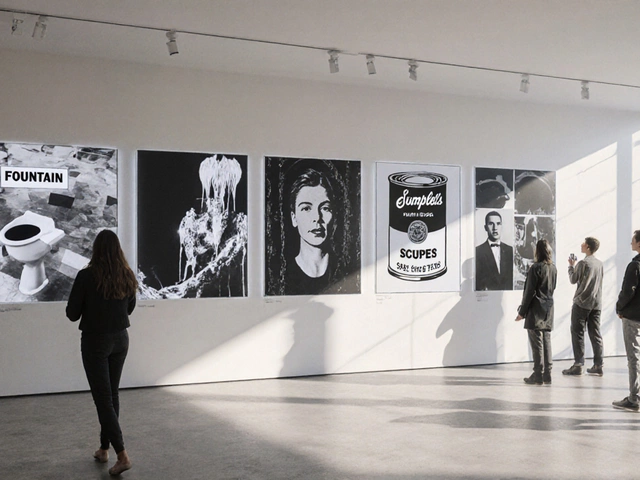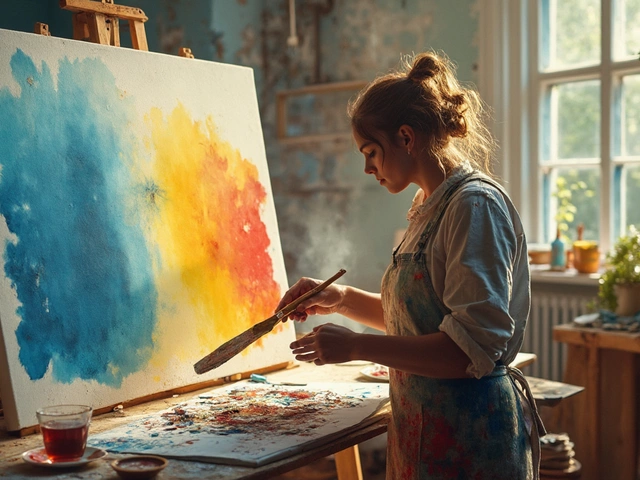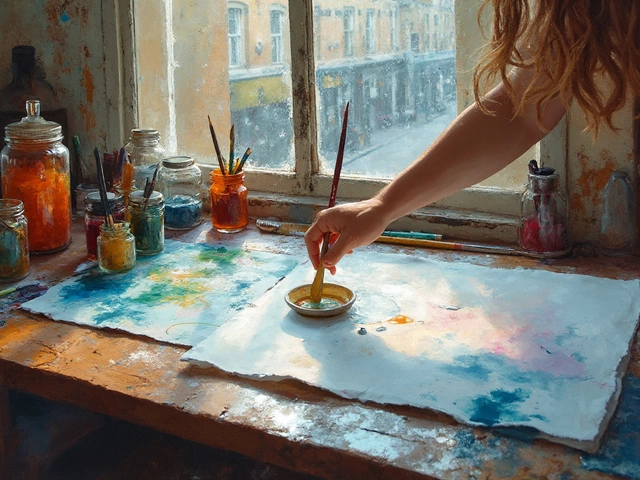If you’ve ever peered at a centuries-old oil painting—maybe dazzled by the colors and weirdly perfect textures—there’s some behind-the-scenes chemistry that might surprise you. There’s an unsung rule in the oil painter’s arsenal: the "slow over fast" rule. Ignore it, and your stunning canvas might wrinkle, crack, or peel like a sad, forgotten sticker.
But what does “slow over fast” even mean? It has little to do with how quickly your cat, Whiskers, chases a laser pointer, and everything to do with keeping your artwork looking fresh and gorgeous for years to come. Whether you’re just starting out or you’ve been surrounded by the smell of linseed oil since forever, nailing this one principle will transform your results—and save you endless frustration. So, let’s break down this ancient painter’s secret, without any boring lectures.
What Does the "Slow Over Fast" Rule Really Mean?
On the surface, the "slow over fast" rule sounds almost poetic. But for painters, it’s more science than art. Here’s the lowdown: When you build an oil painting in layers, you want every new layer to dry slower than the one beneath it. In practical terms, that means painting thicker layers or adding more oil and medium as you go. Why? Because as oil paint dries, it expands and contracts a little, and later, harder outer layers can crack if the layers underneath dry after or just as slowly as they do.
Think of oil painting like making a sandwich. If the bread (your base layer) is soggy and the ham (the next layer) is dry, things fall apart. In proper painting, the lower layers should dry faster, meaning they have less oil. Each new layer should be fatter, or "slower-drying"—thus the term "fat over lean" or, even more simply, "slow over fast." The terms are often used interchangeably, but ‘slow over fast’ brings the timing aspect to the front.
Most artists use lean mixes—just a bit of turpentine or mineral spirits with paint—for the first layers, then slowly add more oil medium (like linseed or walnut oil) with each layer. According to tests published by the National Gallery’s Conservation Department in London, oil paint with less oil (lean mixes) dries harder and faster than more oily applications.
| Medium | Thin Lean Layer | Fat Layer (with extra oil) |
|---|---|---|
| Linseed Oil | 2-4 days | 6-12 days |
| Walnut Oil | 3-5 days | 7-14 days |
| Poppy Oil | 4-6 days | 8-18 days |
These numbers aren’t set in stone, since temperature, humidity, and how thick you lay the paint also play a big role. But they do illustrate why layering properly matters. Add a thick, oily layer over a still-tacky, slow-drying under-layer, and you can bet on cracks or, even worse, areas that never feel dry, no matter how much time passes.
Why Do Paintings Crack or Wrinkle? Chemistry in Action
A lot of new oil painters—including me, once upon a time—learn about the slow over fast rule after their first masterpiece went horribly wrong. Ever spent hours on a portrait, only to see a weird pattern of cracks snaking through someone’s cheek a few months later? Or touched a painting a year after you made it and found it still tacky? Welcome to the chemistry of drying oils. Oil paint doesn’t dry like water-based paint—it oxidizes, which takes much longer and happens from the outside in.
When a top layer dries too quickly and becomes rigid, but the layer beneath is still soft or wet, the top stiffens up while the bottom keeps shifting. Result? Crack city. The technical term for this is "craquelure," and it’s not just cosmetic—it can weaken the whole painting. The Conservation Department at the Met Museum points out that cracking is the number one reason paintings get pulled in for restoration.
Wrinkles can also appear if the upper, slower-drying layer gets "shrunk" as the underlayer continues to dry. If you’ve ever painted a thick line over a thin wash that’s not dry yet, you might see your thick paint buckle weirdly as it settles. It’s a little like an overfilled sandwich—layers just can’t find the right balance.
Some artists try to cheat the system, hoping for wild textures or just using thick paint everywhere. But as John Singer Sargent said,
“A thin paint applied over a thick skin will dry in hours; the same thick paint over a thin one can stay soft for years.”Don’t gamble on cracking; it’s almost never the cool effect you hope it’ll be.
Plenty of famous paintings have this issue—look closely at some old Rembrandts or 19th-century masters and you’ll see cracks, pops, and even repair scars. These serve as real-world proof that following the slow-over-fast approach isn’t just old-school dogma.

How Do You Layer Oil Paint Like a Pro?
No need for advanced chemistry homework—just a few basic strategies give you 99% insurance against future disaster. Here’s a practical, hands-on guide to following the slow over fast rule, without needing a PhD or a trolley full of exotic mediums.
- Start with ‘lean’ mixtures on the first layers. Mix your paint with just enough solvent (turpentine or odorless mineral spirits) to thin it, but little or no oil. These layers dry faster and more thoroughly.
- Build up to ‘fat’ layers as you go up. For each subsequent layer, use a mix with a little more oil medium—like linseed, walnut or safflower oil. These make the paint more flexible and slower to dry.
- Let each layer dry to the touch before the next. Patience is boring, but crucial. Early layers can sometimes be painted "wet into wet" while still drying, but as you build up thickness, make sure things are dry or tacky, not wet.
- Avoid mega-thick blobs of slow-drying colors in your final layers. Some pigments, such as ivory black and alizarin crimson, are slowpokes anyway. Use dabs, not dollops, especially at the end.
- Test drying times if unsure. Swipe your fingernail or use a blade to scratch hidden corners. If it leaves a mark or the paint is soft—wait.
Here’s a quick cheatsheet for popular mediums:
| Medium | Used For | Drying Speed |
|---|---|---|
| Turpentine/Mineral Spirits | Lean layers, underpainting | Fast |
| Linseed Oil | Fat layers, increased gloss | Moderate |
| Walnut Oil | Fat layers, less yellowing | Moderate-Slow |
| Poppy/Safflower Oil | Fine detail, pale colors | Slow |
The more oil, the slower it dries. Keep track as you mix up your mediums—one friend of mine marks jars with a big sticker, so he never accidentally flips the order. Sounds nerdy, but after one ruined painting, it’s hard to blame him.
Interesting Facts, Tips, and a Few Advanced Moves
You might’ve heard of the “fat over lean” terminology. It’s just another way of saying slow-over-fast. Both mean oilier ("fatter") mixes always go over leaner (less oily, "faster") mixes. They’re like different accents of the same language. If you’re using pre-mixed mediums—like Winsor & Newton Liquin or Galkyd—check the label. Some are faster-drying than straight linseed, so they’re perfect for rapid layering but can break the rules if slapped on too thick over slow base coats.
Fun fact: Leonardo da Vinci and the Dutch Masters knew these secrets centuries ago. In fact, the famous cracking on the Mona Lisa’s face and shoulders happened because of skipped drying time and maybe a squabble over varnish brands. Modern conservation tech confirms these old painters often made mistakes we make today.
Here are tips the pros swear by:
- Keep a painting journal. Jot down which mediums and mixes you use for each layer—not romantic poetry but a sanity-saver if things go sideways.
- Use alkyd mediums if you’re impatient. They speed up drying but don’t skip the rule: let each layer fully dry so you’re not layering chaos.
- Don’t rush with the hairdryer. Forced heat dries the top only, making cracks likelier later.
- If you paint alla prima (wet-into-wet), don’t stress about this rule. It matters most with paintings built in several sessions over weeks or months.
- Clean your brushes thoroughly. Old oil residues can sneak in unwanted fat onto your next "lean" layer—messing up everything.
Modern conservation experts warn: “Most structural paint problems are preventable with simple rules, especially slow over fast.” Even the best acrylics can’t match oil’s lasting shine and glow—but only if you respect the chemistry.
Now, my cat Whiskers—who’s an expert at slow and fast in his own way—pretty much ignores these rules. But in oil painting, breaking this one has real consequences. So next time you gear up to paint, set up your colors, and mix that first wash, remember: dry fast down below, slow up top. Your future self (and everyone who gazes at your masterpiece) will quietly thank you.





